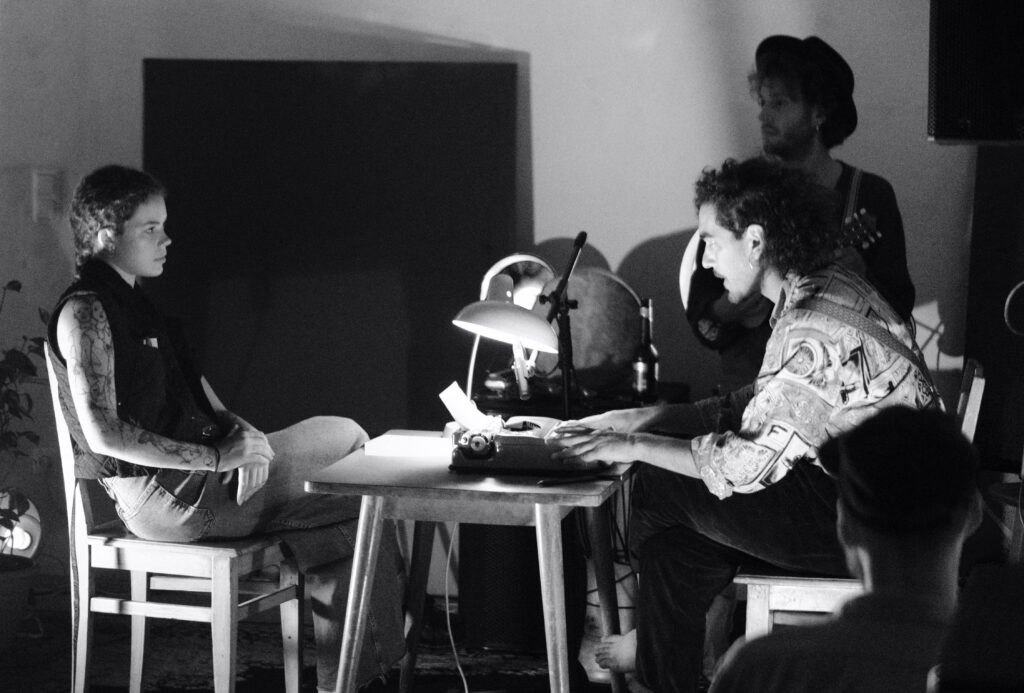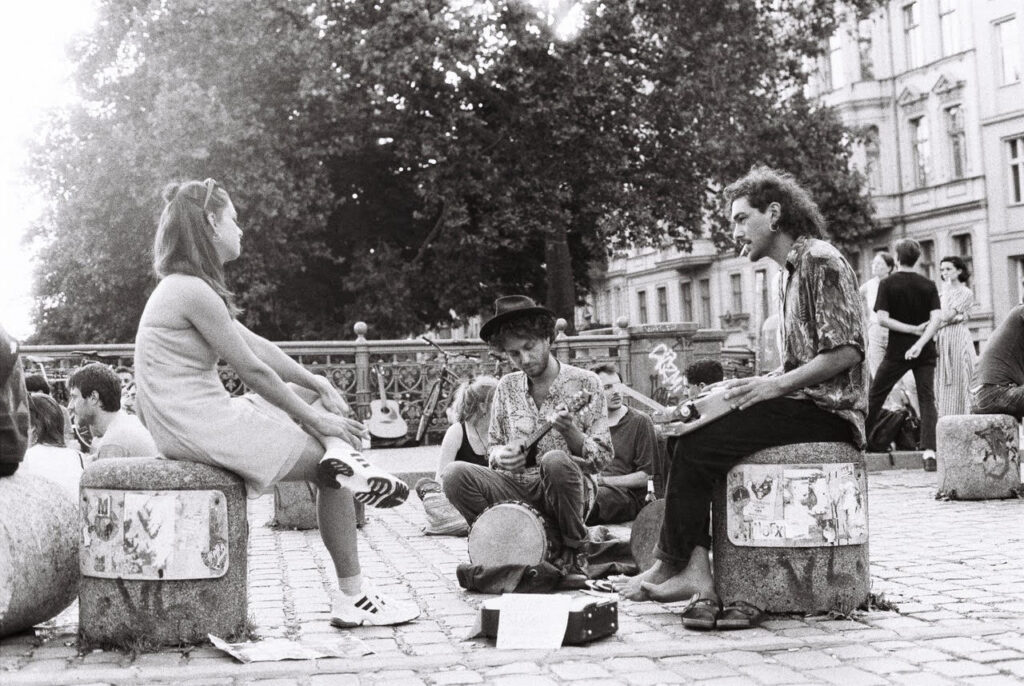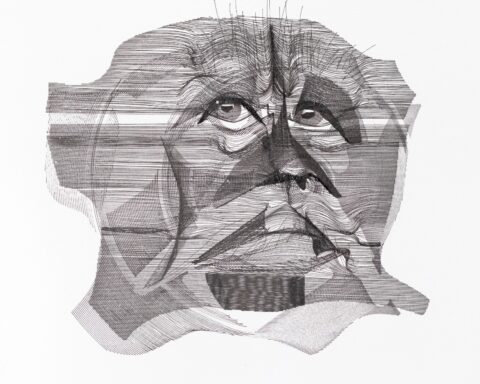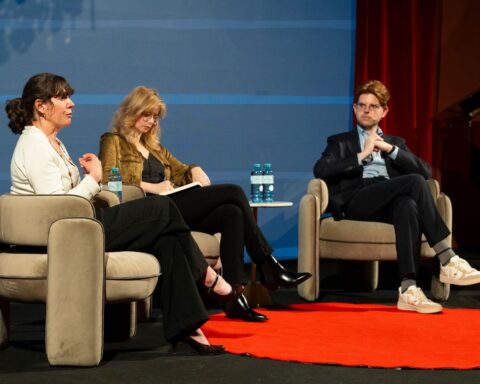Fine brush strokes, defined by different colors, exaggerated sketches highlighting attributes or minimalist features evoking fine corners that outline the appearance and essence of a person by the hands of an artist, that is the art of portraiture dating back more than 5000 years. Adrián Dozetas, a polyglot Argentinian, started transposing this ancient art into words fifteen years ago. This innovative performance takes as its name written portraits, an art in which purely improvisation is involved. Adrián portrays the person in the form of a poem while his guests, who specialize in different disciplines such as music, contemporary dance, painting and photography, not only portray the individual in their own artistic field but also create an environment in which the artist and the person connect and transcend beyond words. This performance is an act of pure art, the writer tells stories that the individual emanates, in the now, live, without premeditation. The music portrays the individual in an abstract way and the dance reflects the vibe of the person set in motion. This together creates a mirror for the person in front of the artist. In the moment, for the moment. With his typewriter, Adrián travels around the world to bars, festivals, and streets, capturing the essence of the people who sit in front of him giving them the written portraits as a gift in English, Spanish, French, or German. In this interview, Adrián talks about what creativity means to him, how he keeps it alive, and how he creates these written portraits.
Creativity: what does it mean to you?
I might change my mind, but I think creativity is secondary, first comes the attitude of questioning the given, then challenging it and creating something parallel to it. We can create an alternative by questioning the given, by not simply accepting it.
How does living in a way that exposes so much of your creativity influence your everyday life?
I believe I was born with this attitude of not taking what is given and constantly seeking alternatives. It’s quite difficult for me to explain how I got here. Nonconformity comes at a high price indeed. It may be more comfortable to follow and accept something given to you rather than questioning it and changing it. So this has given me a lot of happiness and a lot of sadness. Many times when you make these kinds of decisions, to live in a more creative way, to immerse yourself in these questionings, it puts you against the comfortable decision of accepting something that is already done and already proven. So if you take an alternative path and propose something different, you most likely will receive attacks, someone is going to defend what is already established. However, what is most valuable for me is multiplicity, and variety, in the variety of life, it is richness. I feel that monotony on the contrary is death. It is a less comfortable path, not less easy, not more difficult, just less comfortable. It has helped me to notice the richness, the joy of spontaneity, and the ecstasy of life, still, it also gives you bitter moments.

You write poetry in your mother tongue Spanish, but also in English, German and French. Do you think that living this creativity almost daily opened this opportunity for you to learn other languages?
Yes, I realized that although it hurts to have to adapt to other languages, it also liberates a lot. This is because there are a lot of trapped feelings that can be released with language, with grammatical structures. So when you are forced to express yourself in other languages and your tools of expression have to change, it helps you to explore that creative side even more. These uncomfortable situations help you to react faster.

Is there any routine that you follow that keeps your creativity alive?
There is no fixed routine I follow, but I tend to write everything down in different places. Usually, I carry my notebooks with me, but if I don’t have them, I’ll write on my phone or whatever else. It’s important for me to transfer all these ideas I have from my mind onto something else. I strive to remain open and perceptive all the time. I think that’s something that I constantly do but that still, I wouldn’t call it routine.
How do you stay creative in today’s fast-paced world of distraction and productivity?
Creativity is often hindered by reality. Rhythms in our society are rushed, with short breaks, constant socializing, and the use of electronic devices to avoid uncomfortable times. I find myself in those rushed moments too. However, I think it’s about priorities and happiness. If I’m writing and it makes me happy, I prioritize that above all else. And I know the world is going to attack those moments when I want to be alone with my art, those moments when I want to create. This happens a lot, however, it’s about setting your priorities and limitations.
It’s about protecting your creative garden, your space, and defining what makes you happy. It gets easier when you identify that and say this moment is mine.
Adrián Dozetas
In this intimate moment when the music of your guest artist also portrays the person in front of you, do you also add in something of yourself when you write the portrait?
Yes, of course, I also put things of myself there. The person in front of me and I create a portrait together, a poem, with authenticity, knowing that I’m me, and you’re you, and we create a tale, a story. This is my way of creating, my perspective is there, in the end, it is my hands that write, it is me talking about someone, and at the same time it is someone talking through me, and I feel it. We are means to tell stories.
To see Adrián’s books, recent projects and upcoming events, click here.
Header image by Adrián Dozetas.
Reviewed by Leen De Marez and proofread by Ashley McCarthy





